Hypersonics and U.S. Defense
U.S. Hypersonic Weapons and Geopolitics
AEROSPACE & DEFENSE
Drew Hooper
9/16/202420 min read
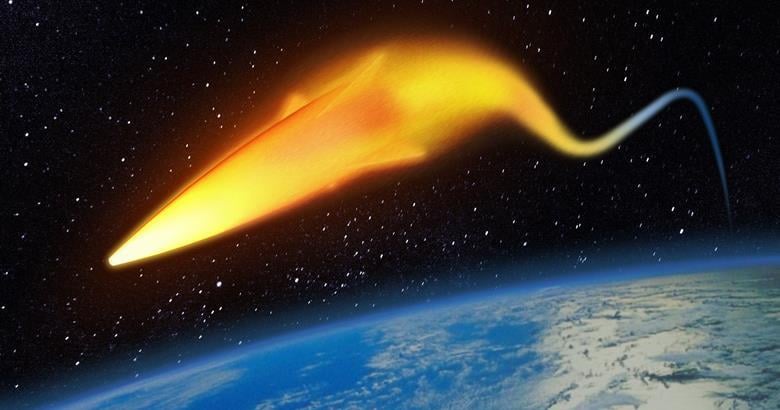

Image Credit: Lockheed Martin
Overview of Hypersonic Weapons
Hypersonic weapons have become a top interest and concern for militaries and nations in recent years. Hypersonic weapons (HSWs) are missiles that travel at more than five times the speed of sound (Mach 5+), chiefly within the earth’s atmosphere, and can maneuver substantially. In contrast, traditional “ballistic missiles” like nuclear ICBMs or submarine-launched missiles, even though capable of technically “hypersonic” speeds up to Mach 20+, fly in a predictable parabolic (arc-like) trajectory, most of which occurs in low space (i.e. outside the earth’s atmosphere). Hypersonic weapons present a new risk/capability against militaries and nations: their low altitude flight path delays detection and tracking by current ground radar and satellite arrays, they arrive much faster at targets, and they can maneuver mid-flight to circumvent defenses, evade interceptors, and switch targets. For reference, an object traveling at an average speed of Mach 6 (1.7 km per second) could fly from Los Angeles to New York City (~3,930 km) in less than 40 minutes.
Typically, hypersonic weapons come in two formats. Hypersonic glide vehicles (HGVs) are launched by ballistic rocket boosters into low space, then quickly dive and re-enter the atmosphere where they glide and maneuver at 30-80 km altitude for hundreds or thousands of kilometers, before diving to strike a target. Alternatively, some HGVs can perform a series of “pull up” maneuvers atop the edge of earth’s atmosphere (also called a “skip glide” trajectory) which extends their range, before descending and maneuvering toward a target. Secondly, hypersonic cruise missiles (HCMs) carry onboard rocket engines or scramjet “air-breathing” engines which provide continuous propulsion while cruising between 20-40 km altitude. HCMs can be launched by a first-stage rocket booster or air-launched by fighters and bombers, before their onboard engines take over. Scramjet engines novelly compress and combust air at high altitudes to achieve hypersonic propulsion, but are still a new technology with certain complexities; rocket engines are more reliable but require onboard oxygen tanks (which take up space and add weight). Furthermore, hybrids between HGVs, HCMs, and ballistic missiles can exist; one such hybrid is a ballistic missile equipped with a "maneuvering reentry vehicle" (MaRV).
Figure 1 - Trajectories of HGV, HCM, BM, and MaRV
Source: Lambakis and MDA (2023)
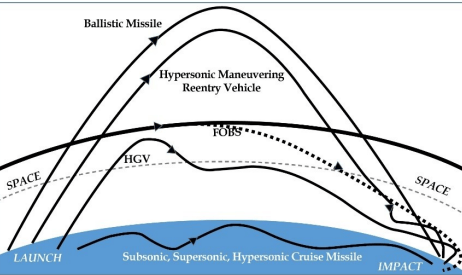

Russian Hypersonic Threats
In his 2018 annual presidential address to the Russian Federal Assembly, President Putin unveiled the military’s newest “super weapons”, including two hypersonic missiles. These were the Kinzhal, an air-launched missile capable of Mach 10 speeds (fielded in late 2017), and the Avangard, a long-range Mach 20+ hypersonic glide vehicle (fielded in 2019). President Putin contextualized these advanced weapons as a “response to the unilateral withdrawal of the United States of America from the Anti-Ballistic Missile Treaty and the practical deployment of their missile defence systems both in the US and beyond their national borders.” And he went on to assert that these hypersonic weapons could “overcome all existing and [likely all] prospective anti-aircraft and anti-missile defence systems, delivering nuclear and conventional warheads.” Some weeks later, Putin also publicly announced the Zircon, a hypersonic scramjet cruise missile capable of Mach 8-9 speeds to become operational by 2024. In addition to these early announced HSWs, open sources indicate that Russia has and is developing various other hypersonic weapons, including various HCMs and another HGV, to soon enter service.

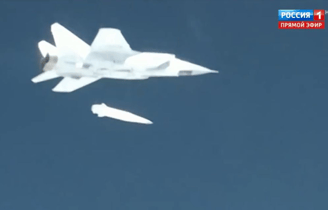
Image 1 - Russian MiG-31 air-launching a Kinzhal missile for flight test in 2018
Source: Popular Mechanics (2018)
Chinese Hypersonic Threats
Similar to Russia, China has viewed the United States’ development of strategic conventional weapons and growing ballistic missile defenses as a threat to their nuclear deterrent. China’s response has been to rapidly grow its overall missile portfolio, including its strategic nuclear arsenal as well as new hypersonic weapons. In a 2019 parade marking the PRC’s 70th national anniversary, among various new military systems China displayed the DF-ZF hypersonic glide vehicle and its DF-17 road-mobile rocket booster. The DF-ZF can achieve Mach 5-10 glide speeds, perform “extreme maneuvers”, and carry either conventional or nuclear payloads. It is assumed to have been fielded by the Chinese People’s Liberation Army (PLA) in 2020. In 2018, China showcased the CM-401, a short-range HGV anti-ship missile capable of Mach 4-6 speeds and “skip-glide” maneuvering, as available for foreign military sale. It is also assumed to be operational within the Chinese PLA.
China has also developed intermediate-range anti-ship ballistic missiles equipped with maneuvering warheads (MaRVs), the DF-21D and DF-26; the 5,000+ km range, Mach 10 capable, and ground-launched DF-27 HGV missile; as well as the intermediate-range YJ-21 HGV missile, intended for anti-ship targets and launchable from ships, submarines, and air bombers. Although their exact capabilities have not been formally/publicly verified, all these are suspected to be operational and considered high-likelihood threats. Notably, testing and military simulations of anti-ship weapons have increased in recent years, signaling China’s “anti-access/area-denial” (A2/AD) capabilities in order to deter U.S. naval support of Taiwan and other Indo-Pacific involvement. In addition, China is testing various other HSWs–including a scramjet waverider weapon, Starry Sky2, as well as a Fractional Orbital Bombardment System (FOBS) equipped with an HGV (that would provide global, fast-strike capability). Overall, China could be considered as “leading” the hypersonics race in quantity of flight tests and deployed weapons, and in every case presents an advanced threat to the U.S. and allies.
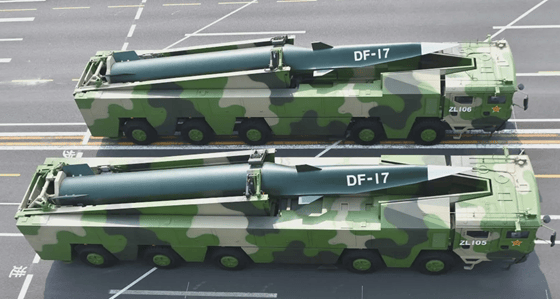

Image 2 - DF-17 road-mobile launchers and “mockup” HGVs for PRC’s 70th Anniversary Parade
Source: China Military and The War Zone (2019)
U.S. Hypersonic Capabilities
Initial Response to Threats
While not a total surprise, President Putin’s 2018 announcements of Russian hypersonic weapons reportedly set off a note of some alarm for U.S. defense and Congressional leaders, as well as for the general public. But given increasing tensions over Taiwan (the U.S. and world's sole supplier of highly advanced semiconductors) and control in the Indo-Pacific region, China’s fast-emerging hypersonic weapons constituted an even greater threat to U.S. forward bases, allies, and international order. In 2018, then newly appointed Undersecretary of Defense for Research & Engineering, Michael Griffin, emphasized hypersonics as the “highest technical priority” for U.S. defense, and went on to say:
“When the Chinese can deploy [a] tactical or regional hypersonic system, they hold at risk our carrier battle groups. They hold our entire surface fleet at risk. They hold at risk our forward-deployed forces and land-based forces… Without our ability to defend and without at least an equal response capability on the offensive side, then what we have done is we have allowed a situation to exist where our deployed forces are held at risk and we cannot do the same for them. And so our only response is either to let them have their way or to go nuclear. And that should be an unacceptable situation for the United States.”
The U.S. had researched hypersonic capabilities off and on for decades, and had earlier seen greater successes than Russia (or China), but as of 2018 was years away from fielding a workable HSW. With Russia’s and China’s first-mover advantage as compelling motivation, the U.S. has worked to quickly develop hypersonic weapons of its own.
Hypersonic Weapons
As of September 2024, the U.S. has four hypersonic weapons on track for deployment between 2025 and 2029, with other potentials in the pipeline. The DoD has (publicly) announced only conventional hypersonic weapons, though nuclear payloads remain feasible. The Army will deploy the first U.S. hypersonic weapon in 2025, the Long-Range Hypersonic Weapon (LRHW) a.k.a. Dark Eagle. The LRHW constitutes a ground-launched HGV and can reportedly achieve Mach 17 speeds and strike ground targets within 0.1 m circular error accuracy (CEP) at a range of up to 2,775 km. The Navy is on track to operationalize their Conventional Prompt Strike - Intermediate Range (CPS-IR) hypersonic weapon–which utilizes the same rocket booster and HGV design as the LRHW–on submarines and cruisers by 2029. The Air Force plans to field a “scramjet” hypersonic cruise missile, the Hypersonic Attack Cruise Missile (HACM), by 2027 for both fighters and bombers. The max speed of the Air Force’s HACM is not yet disclosed, and it will likely have a range around 500 km. The table below highlights the U.S. hypersonic weapons mentioned above along with others in the pipeline and concept testing.
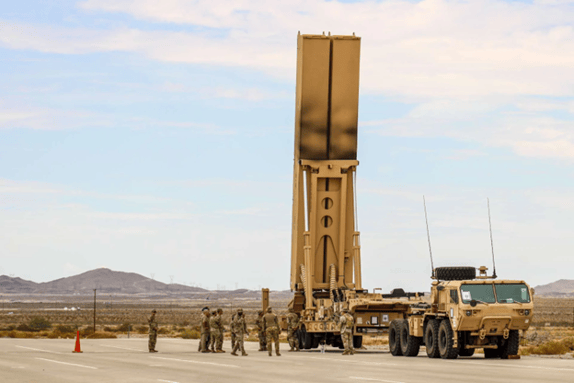

Image 3 - Army "Long-range Hypersonic Weapon" (LRHW) in Transporter-Erector-Launcher
Source: Army Recognition (2024)
Notwithstanding, U.S. Congress has called for the DoD to quickly develop more capable hypersonics defenses. The Navy and MDA are designing new variants of the SM-6 with improved anti-HSW capabilities (speed, engagement altitude, range, etc.), including the SM-6 Block IIB intended to begin production in 2024. As well, the Navy is testing Patriot interceptors (PAC-3) aboard its Aegis cruisers. Perhaps most anticipated, MDA and the Navy (in partnership with Japan) are developing a Glide Phase Interceptor (GPI) designed to intercept HGVs (and likely HCMs) during glide phase. Neither MDA nor Navy have yet announced the GPI’s speed, but plan to deploy the GPI on Aegis ships by 2029. Similarly, DARPA is developing an HGV interceptor concept called Glide Breaker which intercepts HGVs during glide phase; the design likely aligns with Navy Aegis launchers, but could also be adapted for Army or Air Force equipment. The Navy also announced in 2024 ongoing development of a Compact Agile Interceptor, designed uniquely to fit more compactly inside Aegis launchers and thus enable a deeper magazine of loaded missiles. The Army has plans to develop a new Patriot interceptor, likely to enter service in the mid 2030s, which can better counter HSWs and electronic warfare.
Furthermore, the DoD is exploring experimental methods including high-energy laser (HEL) and high power microwave (HPM) weapons for air and missile defense. Initial variants of these directed energy (DE) weapons target slower missiles and UAS at closer ranges; which would enable naval and ground forces to preserve their quantity-limited (and costly) interceptors for more advanced ballistic and hypersonic missile threats. The Army, Air Force, and Navy each have several prototypes of HELs and HPMs deployed on ground vehicles and ships, and are conducting ongoing testing. Potentially into the 2030s, next iterations of directed energy weapons could target ballistic and hypersonic missiles.
Hypersonic Defenses
In 2018, the U.S. began assessing its current defenses for anti-HSW capability, as well as undertaking to develop new interceptors and technologies. Defenses against hypersonic weapons mainly entail: 1) interceptor missiles, as well as 2) more experimental weapons for disabling incoming missiles. Missile detection and tracking (MD/MT) sensors also play a key role, and will be discussed in the subsequent section.
Of the current defenses, initially the Aegis-launched SM-6 interceptor missile was assessed to have a “limited” capability of defending against HGVs during glide phase--given its Mach 3.5-5+ speeds (depending on the variant), range of 460 km, lower engagement altitude (5-40 km), and “launch on remote” integrated targeting capacity. However, some HGVs and even HCMs can maneuver overtop of the SM-6's engagement altitude or simply evade it with higher speeds. On the other hand, other U.S. interceptors such as the THAAD or SM-3, while capable of higher Mach speeds, have too high of engagement altitudes (40-50+ km and 150+ km) such that hypersonic weapons can navigate safely below them. Patriot terminal interceptors were initially discounted due to their limited range (e.g. the PAC-3 MSE can engage incoming BMs at up to 60 km) and relatively lower speed (Mach 6). And the U.S. would prefer to engage BMs and HSWs at further distances, allowing time for multiple intercept attempts.
To note, Russia’s use of the Kinzhal and Zircon missiles in the ongoing war with Ukraine have raised doubts about these initially claimed "invincible" weapons. Ukraine claims to have intercepted 20+ Kinzhal missiles since 2023, largely with U.S. Patriot missile defense systems. In several of these instances, international sources have verified that Ukraine indeed intercepted Kinzhal missiles. Consequently, experts now describe the Kinzhal as an air-launched, depressed-trajectory ballistic missile (rather than a fully maneuvering hypersonic weapon) and others doubt its purported capabilities. Russia has also launched Zircon missiles against Ukraine--and in February 2024 the Ukrainian Air Force claimed to have intercepted two Zircon missiles using Patriot defense systems. Forensic evidence identifying Zircon missiles has been found at the missile crash sites in Kyiv; but at least one Ukrainian analyst questions if the Zircon was actually used. Some suggest that the Kinzhal and Zircon missiles slow down in their terminal dive (due to increased air drag at lower altitudes) to speeds below Mach 6, making them vulnerable to Patriot PAC-2 and PAC-3 interceptors. Additional data and verification is needed to determine the actual capabilities of the Kinzhal and Zircon.
Missile Detection and Tracking
In tandem with new interceptors and other effectors, the U.S. is investing heavily to improve its missile detection and missile tracking (MD/MT) capabilities for advanced ballistic and hypersonic threats.
Currently, the United States utilizes 13 infrared satellites in GEO and HEO orbits (from the DSP and SBIRS early warning programs) to detect ballistic missile launches across the globe. As well, the U.S. operates six Upgraded Early Warning Radars (UEWRs), a sea-based X-band radar (SXR), and various smaller mobile radar units that can detect and track missiles. Both the satellites and large radars were designed chiefly to detect and track ballistic missile threats, and together comprise the U.S. Ground-based Midcourse Defense (GMD). Tracking a missile entails “maintaining custody” with high sensitivity of its geolocation and transmitting data to C2 with low latency, so as to guide an interceptor into engagement proximity. The current satellites provide early detection, and the radars largely provide missile classification and custody tracking.
Figure 2 - Global Missile Defense (GMD) plan for ICBM detection, tracking, and interception
Figure 4 - SDA’s multi-layer Proliferated Warfighter Space Architecture (PWSA)
Source: Council on Geostrategy (2023)
Figure 3 - Ground Radar “Horizon Line” Detection of Missile Threats
Against emerging hypersonic weapons, the current satellites and large radars can provide global detection coverage, but fall far short in precision tracking. The DSP and SBIRS infrared satellites can still detect the launch of any HGV or advanced ballistic weapon (from the booster’s heat signature) and determine the initial trajectory to pass along to terrestrial radars. They can also somewhat detect the heat signature of an HCM’s onboard scramjet or rocket engine. But weather conditions, varying temperatures and topography of the earth’s surface, and the speed and maneuvers of the HSWs make it impossible for the current DSP and SBIRS satellites to achieve high precision tracking. As for radar, while the UEWR and SBX arrays can provide fire-control missile tracking against HSWs to guide interceptors into proximity, low-altitude trajectories reduce the time window for detection and defensive response. As a simplified example (using geometry), a hypersonic missile flying at 30 km altitude only becomes visible above the horizon to ground-level radar at a range of ~617 km; whereas a ballistic missile at 1,000 km in altitude would be visible to ground-level radar at a range of ~3,700 km (if the radar has sufficient sensing range). If flying at Mach 6.7 (2 km/second), the hypersonic missile would arrive at target in 308 seconds versus 1,500 seconds for the ballistic missile. Thus, hypersonic weapons offer far less time for radar to identify, acquire custody, and transmit precision geolocation data for any interception attempt. Moreover, HSW maneuvering capabilities may enable new pathways to target that further delay radar tracking. Again in summary, both space-based sensors and terrestrial sensors of the current GMD system are limited for facing hypersonic threats.
The DoD has plans to strengthen both terrestrial and space-based MD/MT networks. When used in tandem, these can provide more comprehensive coverage as well as redundancy in the case one or the other experiences an outage or comes under attack. The Missile Defense Agency (MDA) is working to complete a higher sensitivity Long-range Discrimination Radar (LRDR) in Alaska by 2025, primarily to monitor North Korea but also useful for surveilling all activity in the northwestern and Indo-Pacific regions. In late 2023, the Air Force announced plans to construct six Over-the-Horizon Radar (OTHR) arrays in partnership with Canada (under the NORAD partnership) by 2031, to provide broader missile detection coverage in northern-facing regions. Of note, airborne sensors have been successfully tested to provide fire-control tracking of missile threats–including the F-35's onboard AESA radar, R-Q4 UAVs, and aerostats. As of yet, no U.S. official airborne sensor system has been implemented. But in 2021 the U.S. sold 10 aerostat sensors to Saudi Arabia, and in May 2024 sold another four aerostat sensors to Poland which will be deployed near their shared borders with Russian and Belarusian territory. Potential future airborne sensor systems could provide another layer of MD/MT coverage and redundancy, and/or provide interim coverage in key regions while new ground radars and satellite constellations are being developed.
One of the central missions of the U.S. Space Force is space-based missile detection and missile tracking. To that end, the Space Development Agency (SDA) was formed in 2019 and operates as a dedicated unit within the Space Force. Presently its sole mission is to design and launch a seven-layer satellite sensor constellation, called the Proliferated Warfighter Space Architecture (PWSA), that will perform unparalleled MD/MT and secondary ISR missions. The Missile Defense Agency (MDA) and Space Systems Command (SSC) are also collaborating with the SDA on designing the next generation of MD/MT satellites (including Next Gen OPIR, HBTSS, and RMWT MEO complementary satellites). As of Q1 2024, so far the SDA and MDA have launched 27 satellites to demonstrate and continue testing these advanced satellites. Into the 2030s, the PWSA could include some 400-1,000+ satellites performing detection, tracking, and data transport from various orbits.
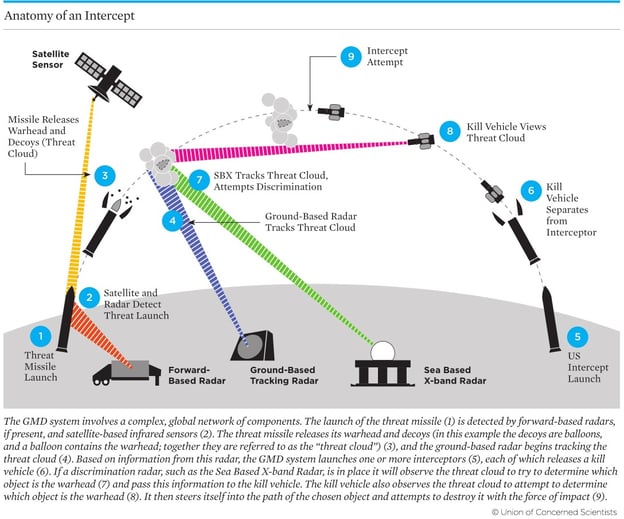

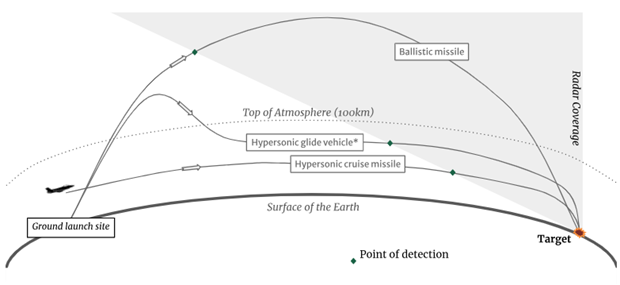

One key reason for the seven layers is to improve defensibility against anti-satellite weapons. Both Russia and China have tested anti-satellite weapons–including ASAT missiles, grappling satellites, high energy lasers, and electronic warfare. Furthermore, Russia and China have considered nuclear detonations in space in order to destroy and disrupt U.S. satellite networks. They both have lesser developed satellite infrastructure than the U.S., and consider space-based weapons as a means of disabling and gaining advantage over the U.S.
Source: NBF (2023) and SDA
Figure 4 - SDA’s multi-layer Proliferated Warfighter Space Architecture (PWSA)
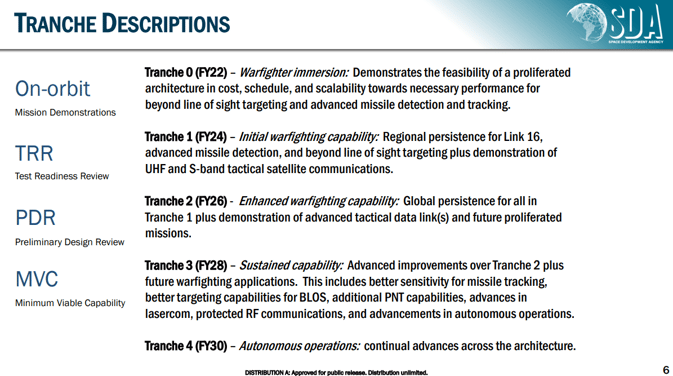

Source: SDA and Inertial Labs (2024)
Hypersonic Aircraft
While hypersonic missiles and defense systems currently receive the most federal funding, the DoD is also actively exploring hypersonic aircraft. Still unofficial but generally known, the Air Force with Lockheed Martin is designing the SR-72, a Mach 6+ unmanned, scramjet-powered aircraft to perform reconnaissance and bomber missions. The SR-72, albeit somewhat fictionalized, was featured in the “Top Gun: Maverick” film of 2022. Previously, Lockheed Martin executives had been publicly disclosing hints about the SR-72’s development, but have remained quiet since President Putin’s 2018 announcement of Russia’s hypersonic weapons.
Additionally, Atlanta-based startup Hermeus is developing hybrid turbojet-scramjet hypersonic engines and aircraft for military and commercial use, with flight testing scheduled to begin in late 2024. Founded in 2018 and backed by headline investors (Sam Altman, Founder’s Fund, In-Q-Tel, etc.), Hermeus has won $100M+ in Air Force and Defense Innovation Unit (DIU) contracts to design and flight test its first hypersonic aircraft. Also, Australia-based Hypersonix Launch Systems holds a contract for the DIU HyCAT program to develop and test a testbed hypersonic UAV, and plans to begin flight testing via Rocket Lab’s HASTE platform in Dec 2024. Likewise, GE Innoveering won a DIU HyCAT contract in November 2023 and subcontracted with Specter Aerospace (formerly FGC Plasma Solutions) to design a testbed UAV; their team has not yet publicly announced a timeline for flight testing.
While not currently holding testbed contracts, startups Venus Aerospace and Stratolaunch both have hypersonic engine and aircraft concepts in progress. Venus Aerospace won a contract with DARPA for prototyping a hypersonic rotating detonation rocket engine; as well as notably intends to develop commercial hypersonic airline vehicles. Stratolaunch has already designed hypersonic UAV prototypes and is conducting commercial flight tests with its unique air-launch platform; and the DoD has contracted with Stratolunch to test military-grade hypersonic tracking technologies (i.e. R-Q4) on UAV flights.
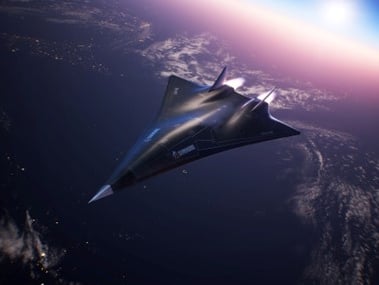

Image 4 - Artist’s Rendition of Hermeus “Darkhorse” and TBCC-Ramjet “Chimera” I & II Engines
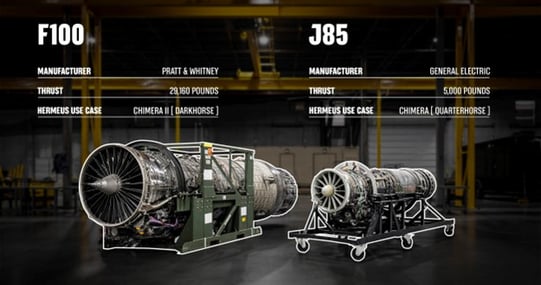

Startup and SMB Contractors
Including those specified above for hypersonic aircraft, startup and SMB innovators are widely contributing in hypersonics projects.
Rocket Motors & Scramjet Engines. Early-stage startup X-Bow Systems holds a $64M contract with the Defense Industrial Base (DIB) to develop an alternate solid rocket motor for the Army’s LRHW and Navy’s CPS-IR common booster. Relatedly, the Navy has multi-million dollar contracts with renowned defense tech startup Anduril, late-stage Ursa Major, and again X-Bow Systems to develop various prototype solid rocket motors for next gen SM-6 interceptors. Early-stage startups Vaya Space and Specter Aerospace are demonstrating hypersonic scramjet engines under multiple contracts with the likes of Defense Innovation Unit (DIU), AFWERX (respectively), Army DEVCOM, etc.
Missiles. Specter Aerospace additionally has developed a hypersonic scramjet missile with diverse SBIR and VC funding. Likewise, early-stage startup Castelion intends to develop a series of hypersonic weapons, and has contracts for hypersonic missile concepts with the Air Force Research Lab (AFRL), Office of Naval Research (ONR), and others. SMB CoAspire partnered with Lockheed Martin, likely on electronics components, to develop the previously mentioned Mako hypersonic scramjet cruise missile. Dayton, Ohio-based GoHypersonic SMB was contracted by Air Force Research Lab (AFRL) to develop a hypersonic testbed vehicle, and serves as a hypersonic simulation software vendor to various DoD clients. Moreover, GoHypersonic, Castelion, and Specter Aerospace, alongside prime contractors L3 Harris/Aerojet Rocketdyne and Northrop Grummon, are concept finalists with the DoD Joint Hypersonic Transition Office (JHTO) for “[rapid] integration of hypersonic weapons into the U.S. missile defense systems” in the next 24 months.
Launch & Test Platforms. Early-stage startup Fenix Space provides a novel “tow-launch” platform to air-launch reusable hypersonic vehicles, and holds a DIU contract to facilitate flight testing of an unspecified HyCAT testbed. Similarly, GE Innoveering (and Specter Aerospace) have subcontracted with Starfighters Space to provide air-launch services for their co-designed DIU HyCAT testbed UAV. Late-stage startup Varda Space, while perhaps primarily known for its space-based pharmaceutical manufacturing platform, also conducts its own space launch, orbit, and reentry operations; the Air Force and NASA have committed $60M to co-design and test atmospheric reentry techniques and materials on Varda Space space capsules.
The table below highlights these startups mentioned above and lists (inexhaustively) their DoD clients for hypersonics projects. Moreover, this sampling represents only some of the startups and SMBs contributing in defense-oriented hypersonics work.
Next Steps for U.S. Hypersonics & Defense
As earlier mentioned, hypersonic weapons present new threats to militaries and nations around the world. These new threats include both theater-level use of hypersonic weapons, as Russia has done against Ukraine (notwithstanding the thus far lackluster performance), as well as implications in global nuclear deterrence strategies. Fuller analysis of theater and strategic stability implications, as well as of the technology readiness and aeromechanical constraints of hypersonics weapons, could serve as the topics for future articles. In the face of the emerging hypersonic threats by Russia and China, the U.S. has a strong, albeit slower-emerging, foundation of both offensive and defensive hypersonic capabilities. Perhaps the best next steps in U.S. hypersonics for policy and defense leaders would be to:
Tightly execute the currently planned hypersonics programs,
Continue investing in future technology and development, and
Conduct a retrospective analysis into factors that have delayed U.S. hypersonics development.
In the first place, a key pillar to U.S. defense is deterrence, for both conventional and nuclear warfare. A successful deterrence strategy requires a capable arsenal and well-trained military, which commensurately innovates and improves. Adding both offensive and defensive hypersonics to its full capabilities, the U.S. military should have near equivalent and in many cases superior arsenal and forces. At the July 2024 NATO Summit, the U.S. and NATO partners announced that the U.S. will soon place mid-range missile launchers, including hypersonic weapons, in Germany–as a response and deterrent against Russian aggression in Ukraine and towards European allies. In the Indo-Pacific, a joint Army-Navy exercise and Air Force exercise both during the last year have tested hypersonic weapons (the ground-launched LRHW/CPS-IR and air-launched ARRW) and other weapons demonstrations, which similarly respond to Chinese aggressions (against Taiwan, Japan, etc.). Again, the best hope for the U.S. to deter conflict and escalation in the European and Indo-Pacific theaters is to counter and overwhelm adversary arsenals and resolve, through demonstrating its own surpassing capabilities. In both theaters, hypersonic weapons counter-match adversary capabilities and signal enhanced U.S. deterrents. That said, given adversaries' determination and perceptions of advantages/disadvantages, conflicts can still arise. If such should occur, sooner deploying hypersonic capabilities better enables U.S. forces to prepare, defend, and decisively defeat threats.
Source: DoD and USNI (2021)
Figure 4 - Chinese Capabilities for Anti-Area/Area-Denial (A2/AD) in Indo-Pacific


Secondly, whatever circumstances emerge, the U.S. should continue investing to develop better and new hypersonic weapons and defenses. For FY2025, the DoD allotted $6.9B for hypersonics research, which comprises nearly 5% of the FY2025 total RDT&E budget ($143.2B) and a 47% increase from the FY2023 hypersonics research budget ($4.7B). Next developments should foremost include the Proliferated Warfighter Space Architecture (PWSA) and advanced missile tracking sensors. Artificial intelligence (AI) surely has a catalyzing role to play in missile detection, tracking, and guidance systems (and in most every technology, in one way or another). Relatedly, the Space Force and all DoD partners must quickly innovate in order to address the vulnerability of space-based assets and develop space weapons; as one option, airborne sensors for MD/MT could both enhance coverage and provide redundancy. More incrementally, the U.S. can iterate with hypersonic missile components in order to bring down production costs (such as China’s claimed steel nose cone innovation). Relatedly, the U.S. should secure its supply of rare resources needed for hypersonic airfoils and counter adversarial efforts to obtain and/or control such (e.g. niobium). The DoD should also prioritize higher speed interceptors, in anticipation that hypersonic weapons will become faster in the years ahead. And while still experimental, directed energy (DE) weapons demonstrate the feasibility and potential to become a valued capability in defending against hypersonic threats (among multiple use-cases). Beyond this small sample, other innovative technologies and considerations should also be considered.
Third, given the extent of threats now facing the nation and allies, Congress and the DoD should perform a retrospection into past decision factors that kept the U.S. from earlier pursuing hypersonic capabilities. An argument can be made that the U.S. partly instigated Russia’s and China’s development of hypersonic weapons, by pursuing conventional strategic weapons and ballistic missile defenses to counter rogue threats. Perhaps the U.S. could have undertaken other approaches to mitigate those risks without giving Russia and China reason (and justification) to develop HSWs. Some DoD leaders applied a “Pandora’s Box” view to hypersonic capabilities, on a lesser scale but not unlike nonproliferation stances on nuclear weaponization; this argument surely held points of reason. However, the concern arises in that the U.S. did begin pursuing hypersonic concepts (for conventional strategic weapons in the 2000s, along with developing limited ballistic missile defenses)–but knowingly has lagged behind Russia and China. Perhaps this suggests indecision among policy and defense leaders, failure to appreciate the threat of hypersonic weapons, underestimation of Russian and Chinese R&D abilities, overestimated U.S. countermeasures, etc. That said, a retrospection may alternatively reveal that policy and defense leaders performed as well as could be hoped, amid complexities of technical development, partisan politics, competing priorities, and information uncertainty. Even so, such a confirmation could help validate and inform continuing policy, defense, and technology strategies. Or if retrospective efforts reveal short-comings, our armed forces and nation stand to benefit from any improved process "safe-guards" and learnings that improve high-level DoD decision-making.
Conclusion
The “race for hypersonics” is a transformative development in United States defense affairs. Russia and China are capable competitors to counter and deter, both at the strategic level and within their local theaters. To counter and deter these and other threats, the Department of Defense can tightly execute its program of hypersonic weapons and defenses (as one essential component in overall U.S. defense strategies and capabilities). Moreover, the DoD should proactively pursue next gen hypersonics, as well as review the past decision factors that may have delayed hypersonic weapons development. The DoD can also continue catalyzing its innovation pipeline by engaging with private sector startups and SMBs. All these efforts serve a vital role in upholding the longstanding security of the United States and peace-seeking nations.
****
Additional analyses beyond this article could investigate:
Greater detail into Russian and Chinese hypersonic weapons, current and future;
Nascent threats of hypersonic weapon development by North Korea and Iran;
Basic flight mechanics and physical constraints on hypersonic weapon performance;
Implications of HSWs on strategic nuclear stability, and local theater stability;
History of U.S. hypersonics R&D and decision factors by U.S. government and DoD leaders;
Landscape of allied and other nations’ hypersonic capabilities, and potential for joint collaborations;
Technology areas for next gen hypersonics R&D and innovative capabilities.
Contact Hooper Consulting with any questions or requests for more information on the content in this article. Or likewise if interested in additional analysis of the hypersonics landscape.
